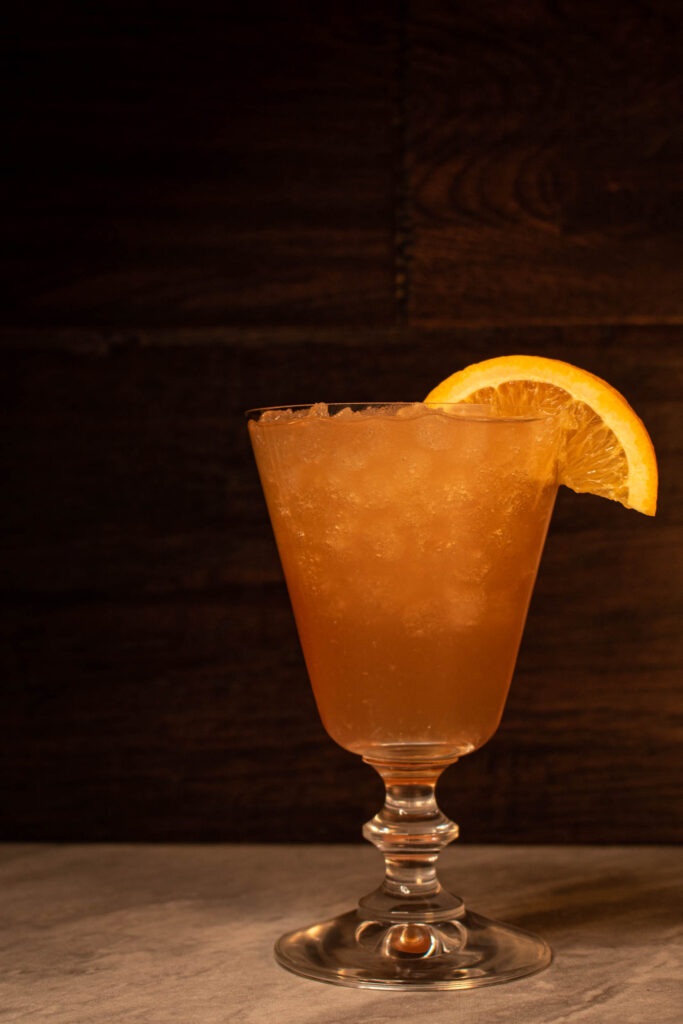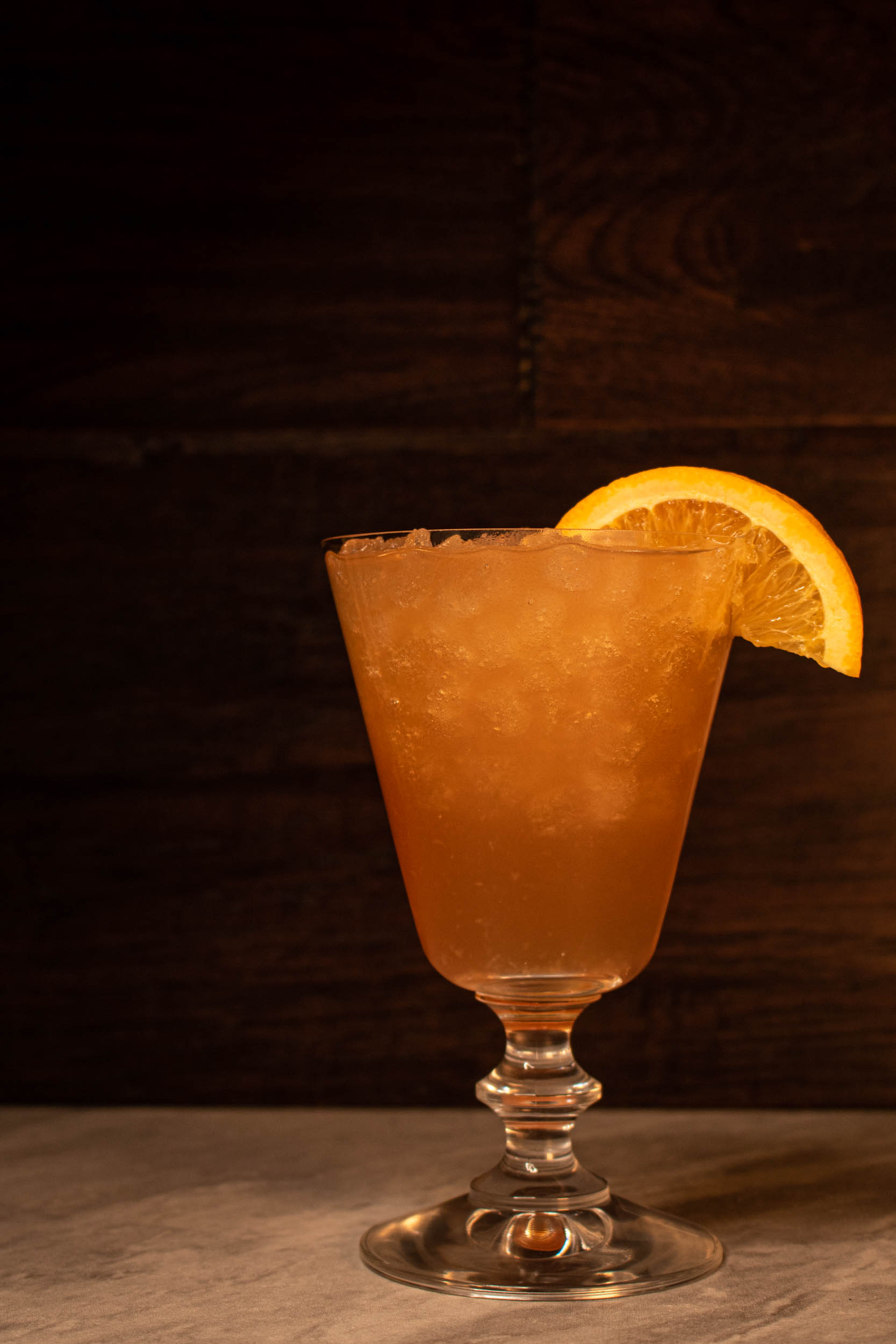
The Sherry Cobbler is one of the original cocktails that can trace it’s origins back to to the 1800’s, and even received printing in Jerry Thomas’ The Bar-Tenders Guide. The drink was popular amongst both men and women as ice was becoming more available, and sherry was more available than certain European wines (the American wine industry would take longer to develop). The result was a relatively easy to make cocktail that could pack lots of flavor and complexity (depending on what was used).
Sherry Cobbler

The Sherry Cobbler is a nutty, balanced, and refreshing drink. The ice brings a perfect level of dilution, keeping the acidity balanced and the sweetness level. What comes out, is a beautiful bouquet of nuts, orange, oak, browned sugars, and slight caramel. The flavors are easy going, but with enough complexity to keep you coming back.
Drink Notes & Recommendations
The Sherry Cobbler is a wonderful simply cocktail. The main component is also the most complex, so let’s delve into Sherry.
A Quick Primer – Sherry
Sherry is made in the Solera method, a method of aging multiple vintages through blending barrels. Wine in a Solera is placed in tiers, where the youngest wine is at the top, and the oldest wine is placed at the bottom and removed in small portions for finished bottles. By this blending method, multiple vintages of wine are combined so that the wine is consistent.
Another way to think of a tic – tac – toe grid (normally Solera are more of a pyramid, but the process is the same). Imagine you have barrels in each box of the grid. Each barrel has sherry in it.
- The bottom barrels are the oldest sherry. The top are the newest.
- Each bottle of sherry pulls some sherry from each level of barrels
- At a regular interval, the sherry from the higher barrels will be used to replace the taken sherry and sherry lost to evaporation. (Typically yearly, but it is a continuous interval)
- This means that determining the exact vintage of a sherry is impossible, but that quality can be maintained and ensured.
While the Solera method may be used to ensure consistency, the types of sherry that result can be somewhat distinct in their style. The following are generally the most common types of sherry you may encounter:
- Fino & Manzanilla – The lightest flavors, these typically show more fruit and salinity. Typically dry and light.
- Amontillado –A bolder and more nutty wine than Fino or Manzanilla. Still dry, although slight sweetness is notable. Moderate body.
- Oloroso – More oxidatively aged, it gets darker and nuttier with more sweetness. Moderate to heavy body, sweeter.
- Pedro Ximenez (PX) – Fig, caramel, dates join with some of the nuttier flavors in a full on sweet experience. Rich body, sweet.
- Sweetened Sherry – For example, Cream Sherry, which is typically is somewhere between PX and Olosoro.
Drink Notes
The garnish for this drink calls for seasonal berries. These are meant to enhance the visual appeal more than add flavor.
- Sherry – As the descriptions above suggest, your choice of sherry makes a significant difference in how your Sherry Cobbler turns out. Amontillado and Olosoro are the most balanced choices here, adding body without overdoing sugar. Choosing a sweet sherry, like PX may mean that less or no sugar is required. Fino and Manzanilla may find themselves overwhelmed here, but if you choose to use them, you’ll want to consider increasing your sweetness.
- Simple Syrup – A traditional 1:1 water to sugar simple is classic for this recipe.
- Orange Slices – These appear to be the defacto standard for this drink, but some omit the orange. These do add a nice refreshing note for certain sherries, especially those without a lot of complexity. If you find you’re using something particularly nice, feel free to omit them.
One thought on “The Classics: Sherry Cobbler”